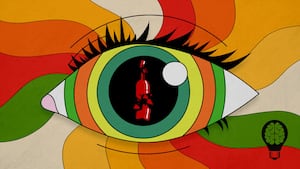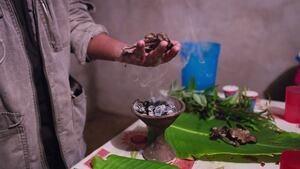My Instagram feed is currently riddled with mushroom advertisements. A mushroom beverage exceeds coffee for focus and health benefits! Mushroom face serums provide youthful, plump-celled, and small-pored complexions! Another mushroom supplement rivals Xanax! To say nothing of the anti-dementia mushrooms, cancer-fighting mushrooms, gut-health mushrooms, and luxury magic mushroom retreats! In 2022, The New York Times named mushrooms the “ingredient of the year” and the U.S. food broker Presence hailed “mushroom everything” alongside carbonated sodas, relaxation supplements, and sleep supplements.
But how did mushrooms—a largely marginalized category of beings—develop such prominence in popular imagination?
Sure, additional research reinforces mushrooms’ transformative potential. In 2008, for instance, Ekaterina Dadachova, chair in Radiopharmacy and a professor at the College of Pharmacy and Nutrition at the University of Saskatchewan for Nuclear Innovation, showed how mushrooms in the cooling reactors of Chernobyl Nuclear Power Plant could absorb and convert radioactive energy. More recent studies show how fungus breaks down plastic. Mushrooms also shape environments, facilitating plant communication, for instance. Mushrooms are appearing in literature like The Over Story and Tears of the Trufflepig, as well as more robust naturalist volumes with philosophical intent, such as Merlin Sheldrake’s 2020 book, Entangled Life: How Fungi Make our Worlds, Change Our Minds, and Shape Our Futures. Mushrooms have entered artistic dialogues via art exhibits and artist practices where fungi are used to reflect upon death, transformation, and alternative energy. These artworks are generative, opening new channels of awareness—for instance, how TJ Yuen’s Microbial Speculation of our Gut Feeling externalizes the microbes inside of us to connect with diasporic and immigrant experience. But why now?
One point of origin for mushroom celebrity is The Mushroom at the End of the World: On the Possibility of Life in Capitalist Ruins (Princeton University Press, 2015), by Anna Lowenhaupt Tsing. Well-loved by academics, environmental activists, artists, and others, the book remains relevant. It acknowledges not only the tremendous systemic upheavals we face because of climate change and profit-driven interest, but also—and perhaps more importantly—embraces a pragmatic optimism. “Precarity is the condition of being vulnerable to others,” Tsing writes. “Unpredictable encounters transform us; we are not in control, even of ourselves.” Focused on the highly sought wild matsutake mushroom, Tsing’s research reveals cooperative multispecies networks that support fruiting matsutakes—networks that additionally reveal historic and political events around global supply chains. These mushrooms can only be harvested in the wild despite relying on human disturbance in forests to flourish. For Tsing, the matsutake captures a specific history of global production, amplifying stress points in that system, while pointing out a means to adapt after capitalism’s collapse.
But if fungus was once intended to exemplify the adaptation needed for a collective and cooperative future, it has since been commissioned to attend to our most individualistic needs—providing boutique balms, expensively packaged in disposable boxes—for all the physical, psychological, and existential anxieties brought on by our age.
In The Devil Wears Prada, a young Andy Sachs (played by Anne Hathaway) is scolded by the editor of Runway Magazine, Miranda Priestly (played by Meryl Streep). Sachs does little to hide her contempt for the materialistic workplace. When finally addressed, her employer says:
This... stuff'? Oh. OK. I see. You think this has nothing to do with you. You go to your closet and you select... I don’t know... that lumpy blue sweater, for instance, because you’re trying to tell the world that you take yourself too seriously to care about what you put on your back. But what you don’t know is that that sweater is not just blue, it’s not turquoise. It’s not lapis. It’s actually cerulean. And you’re also blithely unaware of the fact that in 2002, Oscar de la Renta did a collection of cerulean gowns. And then I think it was Yves Saint Laurent... wasn’t it, who showed cerulean military jackets? I think we need a jacket here. And then cerulean quickly showed up in the collections of eight different designers. And then it… filtered down through the department stores and then trickled on down into some tragic Casual Corner where you, no doubt, fished it out of some clearance bin. However, that blue represents millions of dollars and countless jobs and it’s sort of comical how you think that you’ve made a choice that exempts you from the fashion industry when, in fact, you’re wearing the sweater that was selected for you by the people in this room from a pile of stuff.
Priestly articulates a network of influences in this aesthetic trickle-down effect which, although human (and market)-centric, echoes Tsing’s more-than-human study of the matsutake. In this context, the sentiment further parallels how academic research trickles into the marketplace, packaging and hobbling radical thought. There’s an imposed commensurability between knowledge production and consumerism, even to the extent that North American scholars are “asked to become entrepreneurs.” Like the color cerulean, the conceptualization of mushrooms has passed from academia to science to art to the general commercial market.
Was the specter of the mushroom too dangerous for the systems of capital? Did it have to be sliced up into individual pieces, neutered, at the risk of otherwise dismantling an overarching system of waste? “In capitalist logic of commodification, things are torn from their life worlds to become objects for exchange,” Tsing says. By refusing to become domestic and relying on multispecies cooperation, she argues the matsutake cannot be extracted from its environment and thus resists becoming an object for exchange. Its specificity resists commodification. The matsutake can’t be reproduced.
But as it turns out, the market doesn’t need the actual mushroom. Rather, it absorbs the matsutake-idea, along with the lion’s mane mushroom-idea, and the reishi mushroom-idea, bundling the specificities of those three along with other mushroom-ideas affiliated with the shitake, chaga, turkey tail, or cordyceps into one generic mushroom-concept which is divisible and replicated, repackaged and sold back to us as a catch-all remedy for the panic associated with our era: extreme weather events and climate change, racial injustice, inflation and debt, political corruption and unrest, domestic precarity, and even systemic collapse.
Converting real material into slick, packaged concept isn’t new. Guy Debord’s The Society of the Spectacle (1967) contains a slew of bite-sized aphorisms originally printed in a pocket-sized paperback. It was popular among students at the time, even to the extent that the preface of the third French edition states, “The disturbances of 1968 made the book [The Society of the Spectacle] known.” Student-initiated anti-capitalist and anti-consumerist riots tore through Paris in May 1968, galvanizing more than 10 million workers and drawing the whole French economy to a halt. This book informed that outcry. Debord uses words that feel thick and evocative, teasing out the ways in which modern society transforms everything into a surface, or “spectacle,” that lulls citizens into a stupor of consumption: “The spectacle is the nightmare of imprisoned modern society which ultimately expresses nothing more than its desire to sleep. The spectacle is the guardian of sleep.” If we map this language onto the mushroom, its appearance in Instagram ads and Best Of lists suggests that fungi now serve the spectacle of society, reinscribing the consumer’s obligation to find a personal remedy that alleviates environmental stress.
In this scenario, the actual substance of the mushroom is far less significant than the market aura of its promise. With ever increasing heat waves, wildfires, droughts, and hurricanes, the spectacle of 2022 replies, “Let them eat mushrooms!”
The question is whether mushrooms are capable of outperforming capitalism in an age of ecological decline. Can their transcendent powers work within human individuals to instigate the collective paradigm shift we need to implement access to sustained life and health?
Michael Pollen’s book How to Change Your Mind: What the New Science of Psychedelics Teaches Us About Consciousness, Dying, Addiction, Depression, and Transcendence (2019) suggests psilocybin (also known as “magic mushrooms”) might be an answer while anticipating a new market for hallucinogenics. But even if studies reiterate the transformative potential of psychotropics, it seems more likely that the “potential change” concept serves the market first, rather than providing opportunities for a paradigm shift. According to the Energy Institute at the University of Sheffield, “If we compare earth’s history to a calendar year, modern human life has been on earth for about 23 minutes, and in the last 0.2 seconds we’ve used one-third of earth’s natural resources. If we continue using resources at the rate we are, soon we could have nothing left.” Estimations like those suggest a real paradigm shift is nevertheless in order, even if its specific coordinates are difficult to identify. Perhaps that’s because one single goal or objective or solution misses the point.
For that reason, it’s important to recognize the possibilities afforded by multispecies cooperation. If mushrooms can absorb toxins and transform human disturbance into possibility, for instance, we might find new ways to transform an existing toxic environment into a space of biodiversity. Tsing’s book reminds us that the rich network of relations supporting the livelihood of matsutake mushrooms is necessary for survival, health, and even aesthetic pleasure. This framework offers a stark counterpoint to rugged individualism, raising questions about collective responsibility and the impact that individual and commercial gestures (or commodities) have on others. While the commercial market may only require the aura of the mushroom, the benefits of multispecies and environmental cooperation are clear, and we can look to these as a better guide for the future than anxiety-reducing commercial solutions that contribute to the depletion of resources. In that way, the matsutake remains a good teacher. Look at my relationships, it says. Peripheral, generous, and curiously unassuming.
Coco Picard is a writer, cartoonist, and curator. She is the author of The Healing Circle (Aug. 16, 2022; Red Hen Press), which won the Red Hen Press Women’s Prose Prize, as well as two graphic novels, Meowsers (2022) and The Chronicles of Fortune (2017), which was nominated for a DiNKy Award. Art criticism and comics have otherwise appeared under the name Caroline Picard in Artforum, Hyperallergic, The Paris Review, and Seven Stories Press, among others. She founded the Green Lantern Press in 2005, earned her MFA from the School of the Art Institute in Chicago, and was a Bookends Fellow at Stony Brook University. You can visit her online at cocopicard.com.






